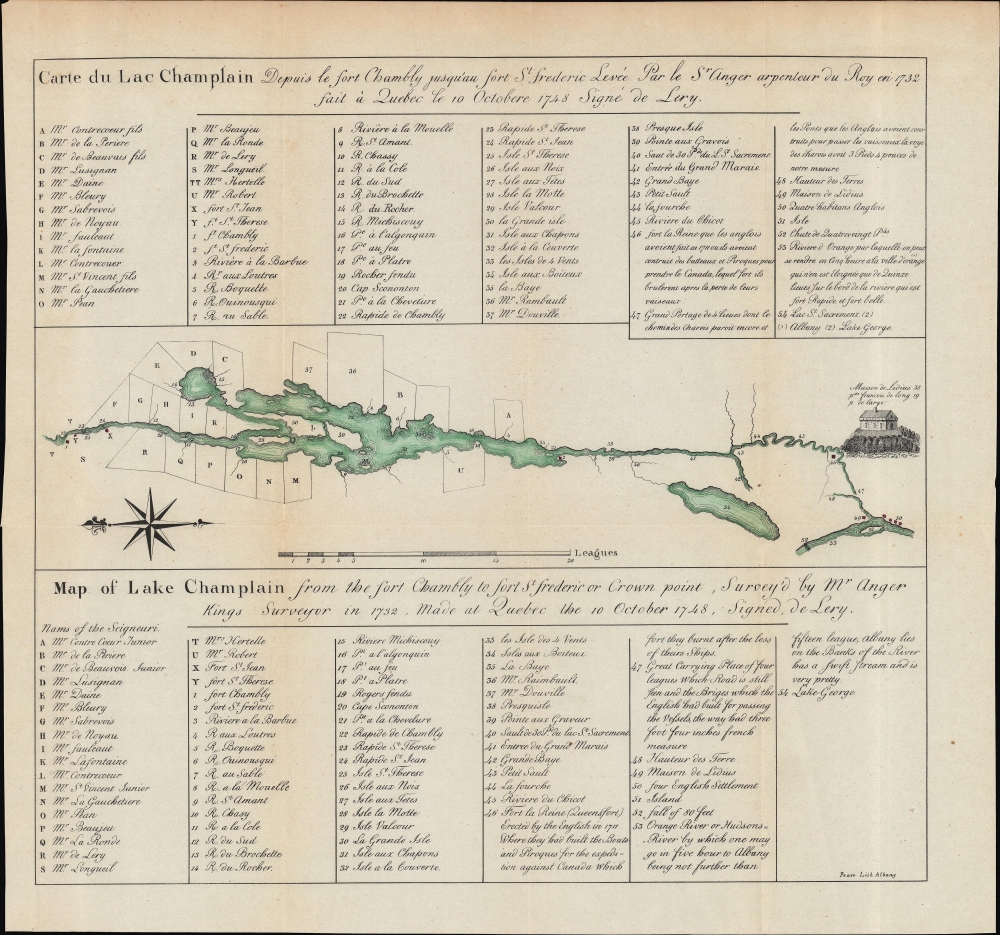1748 / 1849 Pease French-English Bilingual Map of Lake Champlain
LakeChamplainBilingual-pease-1849
Title
1849 (undated) 12.5 x 13.5 in (31.75 x 34.29 cm) 1 : 950000
Description
A Closer Look
Oriented towards the east, with north at left, the map covers Lake Champlain, with Missisquoi Bay and the Richelieu River at left and Lake George and the Hudson River at right. A series of letters and numbers correspond to indexes, which appear in French at the top and in English at the bottom, detailing forts, land plots (grants), trading posts, geographic landmarks, and other features. The English had built some structures in the early 18th century, but the lake was primarily a French area on the frontier of English colonial settlements at this time, setting it up as a battleground in the French and Indian War (1754 - 1763). The 'Maison de Lidius' illustrated at right (49), became the site of Fort Lyman, built by the English in 1755, later renamed Fort Edward.Publication History and Census
This map was lithographed by Richard H. Pease in 1849 and is based on an older, mid-18th-century map surveyed by Anger and prepared by de Léry. It appeared in E. B. O'Callaghan's 1851 book, The Documentary History of the State of New York. The map is independently cataloged in the OCLC among the holdings of the University of Minnesota Twin Cities, the University of Chicago, the New York State Library, Harvard University, Carleton University, Western University (Ontario), and the Fenimore Art Museum. It is also held by the Bennington Museum and the University of Wisconsin-Madison.Cartographer
Richard H. Pease (1813 - 1869) was an American merchant and lithographer active in Albany, New York, during the middle part of the 19th century. Pease is best recognized for his publication of America's first Christmas card for the 1849 -1850 holiday season. He also played a role in populating the American version of Santa Claus and tying it to consumerism in the holiday advertisements his produced for his 'Temple of Fancy or Pease's Great Variety Store.' Pease operated the Great Variety Store in tandem with his lithography business until he passed the store on to his son, Harry E. Pease, in 1855. The store was located at 516 Broadway, Albany. Pease also published hand-colored lithographs of fruit for Ebenezer Emmons’s book Agriculture of New York State, published between 1846 and 1854. From 1856 to 1867 he worked with the lithography firm of Hoffman, Knickerbocker and Co. More by this mapmaker...

